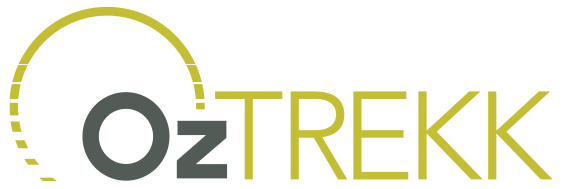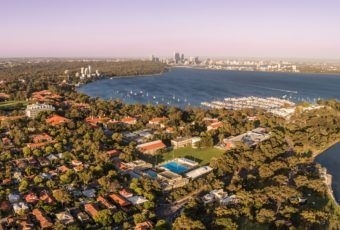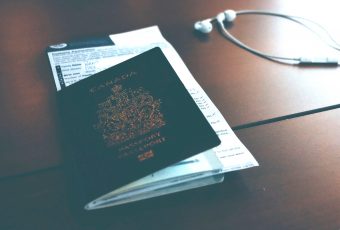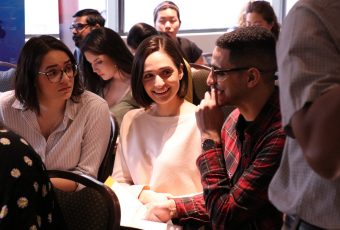Overview
Important: The information on this page is intended to provide you with the basics of the credentialing process. It is your responsibility to contact your provincial regulatory body to ensure you are familiar with the process to return. While we review this content on an annual basis, it is subject to change at any time. Please ensure you review all information provided by the regulatory bodies for the most up-to-date information. OzTREKK is not responsible for your credentialing process.
Graduate occupational therapy degrees granted by Australian universities are recognized by the World Federation of Occupational Therapists (WFOT) and by the Association of Canadian Occupational Therapy Regulator Organizations (ACOTRO).
Graduates who have met all requirements, including completion of a minimum number of qualified fieldwork hours (1,000), are eligible to become licensed to practice in Canada after completing the process outlined below.
Steps to Practice in Canada
How do you become an occupational therapist in Canada?
All internationally educated occupational therapists begin their registration process with the Association of Canadian Occupational Therapy Regulator Organizations (ACOTRO) before applying to a provincial regulator.
After completing the following steps, internationally educated occupational therapists (IEOT) can become certified to practice as an occupational therapist in Canada.
Step #1 Complete Education
Complete an undergraduate degree and gain admission to a Master of Occupational Therapy degree or equivalent. Be sure to accumulate 1000+ hours of qualified fieldwork and graduate from your graduate occupational therapy degree in order to meet the Canadian Association of Occupational Therapists (CAOT) requirements. If it’s determined that not enough hours were completed, you would undertake a process called the “Academic Equivalency Review.”
Step #2 Apply to ACOTRO’s Substantial Equivalency Assessment System (SEAS)
Apply to the Association of Canadian Occupational Therapy Regulatory Organizations (ACOTRO) to have your credentials assessed by their “Substantial Equivalency Assessment System” (SEAS).
The assessment includes four sections:
1. Academic Credential Review (done by a third party) – Credential Evaluation Report obtained via third party World Education Services (WES) at a cost of $200–$300
2. Profession-specific Credential Assessment – Applicants fill out Curriculum and Fieldwork Self-Assessment form allowing ACOTRO to create their PSCA
3. Jurisprudence Admissions Test – An open-book, multiple-choice exam which focuses on the standards of practice and ethics expected of occupational therapists. Applicants may take this test up to two times.
4. Competency Assessment – A day-long (usually six hours) interview similar to an objective structured clinical examination (OSCE)
Step #3 Write National Occupational Therapy Certification Exam (NOTCE)
Once the SEAS has sent your assessment outcome to the province where you want to practice, you can write the CAOT’s National Occupational Therapy Certification Exam (NOTCE).
- Multiple-choice exam consisting of 40 case studies with 200 related questions, with a passing mark of 70+%
- Cost of registration: $655+tax
- Exam sites available in cities across Canada, and a test at an additional site in Canada can be requested if needed at a cost of $400+tax
- Test results are available via your CAOT account approximately 6 weeks after writing
Provincial Requirements
While all Canadian provinces require you to have CAOT certification in order to become licensed to practice, each province has additional licensing requirements:
- College of Occupational Therapists of British Columbia
- Alberta College of Occupational Therapists
- Saskatchewan Society of Occupational Therapists
- College of Occupational Therapists of Manitoba
- College of Occupational Therapists of Ontario
- Ordre des ergothérapeutes du Québec
- New Brunswick Association of Occupational Therapists
- College of Occupational Therapists of Nova Scotia
- Prince Edward Island Occupational Therapists Registration Board
- Newfoundland and Labrador Occupational Therapy Board
Practicing in USA
As an international student, you must apply for the Occupational Therapist Eligibility Determination (OTED) process, conducted by the National Board for Certification in Occupational Therapy (NBCOT). The OTED process will determine if your completed education, including fieldwork, meets the eligibility requirements to apply for the OTR certification exam. Your education and fieldwork must be assessed and confirmed to be comparable to current U.S. entry-level educational standards.
Steps to Practice
Step #1: Complete Education
To be eligible to apply for OTED, you must meet all fieldwork requirements that must be attained, at minimum, at a bachelor’s degree level and have
- an entry-level master’s degree in occupational therapy, or
- a bachelor’s degree in occupational therapy with a post-professional master’s or doctoral degree in occupational therapy, or
- a bachelor’s degree in occupational therapy with a master’s degree in a related field.
Additional coursework may be required to satisfy requirements.
Step #2: Apply for OTED
- Create an online account on the NBCOT website. As a new applicant with a master’s degree in occupational therapy, create an account by clicking the “Register as an Applicant” button.
- Pay the USD$850 fee.
- Provide documentation demonstrating compliance with all eligibility criteria.
To be eligible to apply for OTED, you must meet all fieldwork requirements and have your completed and conferred Master of Occupational Therapy. Please see Documentation requirements.
Step #3: Write the Occupational Therapist Registered Certification Exam
Once you are approved through the OTED process, you are eligible to apply for the OTR certification exam. Exam registration fee is USD$515–$555.
The exam consists of computer-based tests containing
- 3 clinical simulation test (CST) items; and
- 170 four- and three-option single-response multiple-choice items.
The NBCOT certification exams are administered at Prometric Test Centers worldwide.
Step #4: Register with Your State
Your next step will be to register with your state regulatory board. Have a look at the full process on the American Occupational Therapy Association website (How to Get a License).
It is your responsibility to know what the requirements are in the state where you hope to obtain a license. Each state in the United States has a regulatory board and a professional association that provide resources regarding practice and continuing education. Contact the state regulatory board to determine the requirements of that state for initial and continuing ability to practice occupational therapy.
FAQs
Can my partner or family come to Australia with me if I get an offer?
Many Canadians wish to fulfill their career goals after getting married, having kids, or both! We’ve had plenty of students who have taken their partner and/or children with them.
If you want to take your partner or family with you, you’ll need to add them as a secondary applicant or dependents to your student visa application. Even if you don’t plan on taking them with you, we suggest you add them to your application anyway because it can be complex, expensive, and time-consuming to add them afterwards. You’ll then need to provide additional documentation to support your claims of a relationship or your children’s dependency status.
In addition to looking after the visa, you’ll also need to ensure they’re included on your Overseas Student Health Cover (OSHC), you have appropriate accommodation, and if you’re bringing children, you’ll need to enroll them in school.
Visit our Health Insurance page for more information.
When should I apply?
We recommend you begin your OzTREKK application about a year before your program would start. Most programs in Australia start between January and March, so that means you would start your OzTREKK application between January and March the year prior.
Here’s how the typical “cycle” works if your program starts January – March:
March – May: You gather all required documents like passport photo page, transcripts, résumé, personal statement, and send them to our office. Don’t worry, we’ll tell you exactly what we need!
June – August: Interviews (if your program requires one)
September – December: Offer time! If you get an offer, we’ll walk you through the acceptance (or decline) process and give you all the help you need to get ready to go.
January – March: Time to head Down Under!
Can I apply if I’m only 17?
Yes, but you’ll require parental or guardian consent (signature). OzTREKK will provide the necessary documentation for this signature.
If you won’t be 18 when your program starts, you’ll be required to show that you’ll be living with an approved guardian until you turn 18. If you don’t have an approved guardian in Australia, you may need a family member to apply for a guardian visa to accompany you. This guardian visa should be obtained as part of the student visa application
Can my entire application be submitted through OzTREKK?
Absolutely. We manage and submit your application(s) on your behalf and communicate any updates from the universities.
Applying to an Australian or New Zealand university starts by filling out our OzTREKK application: You’ll tell us a bit about yourself, like your name, address, date of birth, education history, and what schools you want to apply to!
When you click “Submit,” the application with all your information only comes to us, so there’s no need to worry about making a mistake at this stage. We then create a file for you (based on your name, not a number!) and email you a list of documents required to complete your application—things like passport photo page, transcripts, résumé, personal statement—but it depends on the program, as some programs require more paperwork than others.
If you get an offer, we’ll help you with that part, too! Whether you want to accept or decline, we’ll help you figure out your next steps. If you accept your offer, we’ll even help you get ready to go. We’re here to be an advocate for you, and to walk you through the entire process from start to finish.
Should you have any questions along the way, just send us an email or book a chat. That’s why we’re here!
Are there any scholarships for international students?
Scholarship options in Australia are usually limited for international students as they tend to be reserved for those undertaking postgraduate research degrees; however, we can advise you where to look and whether specific programs have a history of offering scholarships.
Occasionally, scholarships are granted to high achievers—those with very high marks. In previous years, we have seen $5000- to $10,000-scholarships given to OzTREKK students.
Check out OzTREKK’s Financing page to learn more about scholarships and paying for your degree.
Do you have course outlines on file?
Before sending us outlines, check to see if we’ve already got them. We can save you a lot of time and ensure we’re submitting good outlines on your behalf. Outlines must be within 2 years of the time you took the course (as listed on your transcript).
I received a low mark on my prerequisite course. Will this impact my application?
To meet the prerequisite subjects, you need to have been granted the credit (passed); the grade isn’t considered in the prerequisite assessment.
What does “rolling admissions” mean?
Rolling admissions means the university assesses applications as they are received, or on a “first come, first served” basis. As soon as they’ve met the quota and the program is filled, they close the applications. So, for a program that has rolling admissions, the earlier you apply the better!
How does OzTREKK know if my application will be competitive?
The majority of Canadians applying to full-degree programs in Australia (i.e., not study abroad courses, which usually only last a semester or two) apply through OzTREKK. They’re studying medicine, dentistry, law, physiotherapy, occupational therapy, etc.
Since they’re using OzTREKK’s services, this gives us a good idea of the starting point of a competitive application each year, allowing us to help you determine which universities/programs are most likely to present you with a letter of offer!
You can get started on determining your chances by reviewing the admissions requirements on each program page. Then, visit our GPA Conversions and Eligibility pages for details and suggestions to help you get into the program of your dreams. Of course, OzTREKK is always here to help if you have questions.
What is a 5.0 GPA in Australia?
Unlike in Canada, GPAs in Australia are simple. They are standardized, so they mean the same thing to everyone.
In Australia, a 5.0 / 7.0 would roughly translate to a 2.7 / 4.0 or approximately 70% – 72%, but keep in mind all universities assess slightly differently.
Learn more on our GPA Conversions page where we list the most common Canadian GPA scales to their corresponding Australian GPA grade.
Which prerequisites do I need?
Prerequisite courses vary by university and by program. We’ve listed university- and program-specific requirements on each program’s page under “Admissions Requirements.”
How do universities calculate GPA?
Calculations differ by university, but most use cumulative (all units within a program) or weighted GPA (typically last 2 or 3 years of study). See GPA Calculations for more information.
What are official transcripts, and how do I send them?
For a transcript to be considered “official,” it must be sent directly from your high school, college, and/or university (either via snail mail or by email). It can even come from you—as long as it arrives in the original, sealed envelope.
To assess your application, universities must see your official transcripts certified by OzTREKK—a requirement of Australian and New Zealand universities and a part of our agreement with them.
By email (preferred method): Your high school, college and/or university can email them to transcripts@oztrekk.com or they can use an official transcript service, like Parchment or MyCreds. When submitting a request for a digital transcript and a password is required, please use OZTREKK1 (all capitals, no spaces). If you have a character limit or need to set an access pin, please use 1234.
By mail (only if unable to send via email): Please order your transcripts to be sent directly to our office from all institutions where you have studied since high school, including any college studies, exchanges, transfer credits, and/or advanced placement (or IB) studies. Please note, some programs also require high school transcripts; if this is the case, your student advisor will let you know.
Send your documents via FedEx or Purolator, especially when you need your documents to arrive at our office ASAP. If you use Canada Post’s courier Xpresspost, please don’t request a signature, as this can add delays.
OzTREKK
301–1 Sherbrooke Street East
Perth, ON K7H 1A1 Canada
As soon as your transcript arrives, we’ll let you know!
You don’t meet the required OT prerequisites
Most Australian university occupational therapy (OT) programs require a student to have completed specific undergraduate subjects.
1. Apply to the University of Sydney Master of Occupational Therapy program
The Sydney MOT does not require students to have completed prerequisites; however, previous studies in anatomy and physiology will make for a more competitive application.
2. Enroll in the missing prerequisite(s)
Most Australian universities will let students take non-award courses during the application season to make up the prerequisites they are missing. This means you can submit your application with your interim transcript and proof of enrollment into the prerequisite course. Before enrolling in any prerequisite course, we advise checking with either your admissions officer or the university to make sure the course will satisfy the prerequisite.
If you haven’t completed the prerequisite course(s) by the time offers are issued, then universities may issue a conditional offer. Please note that not all universities will issue conditional offers and it may vary for each program. It’s always best to check with your admissions officer to see if your program of interest will give conditional offers.
What is Substantial Equivalency Assessment System?
According to the Association of Canadian Occupational Therapy Regulatory Organizations (ACOTRO), Substantial Equivalency Assessment System (SEAS) is an assessment process to determine the extent to which an internationally educated occupational therapist’s (IEOT’s) educational qualifications and competencies are substantially equivalent to those of a Canadian-educated occupational therapist.
It is the first step for all IEOTs in the Canadian registration process.
SEAS is a multi-stage assessment approach that
- examines the education that IEOTs originally completed;
- allows IEOTs to demonstrate what they know and can do; and
- ensures IEOTs are familiar with the Canadian legislation, ethics and standards of practice that comprise the framework for occupational therapy practice in Canada.
SEAS has four main components:
1. Review of the Academic Credential Assessment (ACA)
2. Curriculum and Fieldwork – Profession-specific Credential Assessment (PSCA) Review
3. Jurisprudence Knowledge Assessment Test (JKAT)
4. Competency Assessment Interview
Do I need to re-register as an OT if I move to another province?
According to the Association of Canadian Occupational Therapy Regulatory Organizations (ACOTRO), yes. Registration is regulated by province, so every time you move to a new province, you must re-register.
Visit the provincial website of the regulatory body with which you wish to register to learn more. Registration can be an expensive process. You may wish to investigate job opportunities in other provinces before submitting your registration documents.
What are course outlines and how should I submit them to OzTREKK?
A course outline includes all the necessary information about a university course. It will include the course title, the year, the learning goals, the professor’s contact information, reading materials and most important, a weekly learning schedule. This will help the universities to see what you studied on a week-to-week basis and assess if you have covered the material they expect you to know.
- Year and semester date
- Faculty contact information
- Course description
- Hours of study
- Textbook information
- Detailed list of topics that are covered in the course; usually found in a detailed lecture schedule or list of chapter readings
Please note, one-paragraph course descriptions will not suffice. The university would like to see course outlines like those handed out at the beginning of the semester, which outline all topics covered within the course. If you do not have copies of these on hand, contact the faculty from which you undertook these courses, as they usually have copies on file.
These course outlines must be attached to the email in PDF (do not send PDF links) and labelled in the following manner:
CAPS 391 Human Anatomy I UBC F2015 (COURSE CODE)(Name of Course)(University)(Semester & Year)
When you do this, it helps us be more efficient and move your application(s) at lightning speed.
What if my transcripts / documents are not in English?
If your documents are not in English, you must provide full translation of each document, either prepared by your university or by a registered translator. You must not translate the documents yourself.
Please note OzTREKK must receive the official translation directly from the university or translator in order to certify the document. Please read How Do I Send My Transcripts for more information.
I don’t have all the prerequisites. Can I still apply?
Unfortunately, if you do not have the required prerequisites, you are not eligible to apply. If you are missing a course or two, you can enroll in those courses before applying and we will submit your interim transcript with your application. Otherwise, you are welcome to send in a course outline you feel covers the required content. If you’re unsure, please contact OzTREKK for details.
What should I include in my personal statement?
Your personal statement should be no longer than one page and should outline your reasons for applying to study occupational therapy and what you hope to gain from it and should include a brief statement concerning your suitability for the program.


































Ask A Question
Ask us about your program of interest, or if you have a question about our services.
CONTACT US TODAY